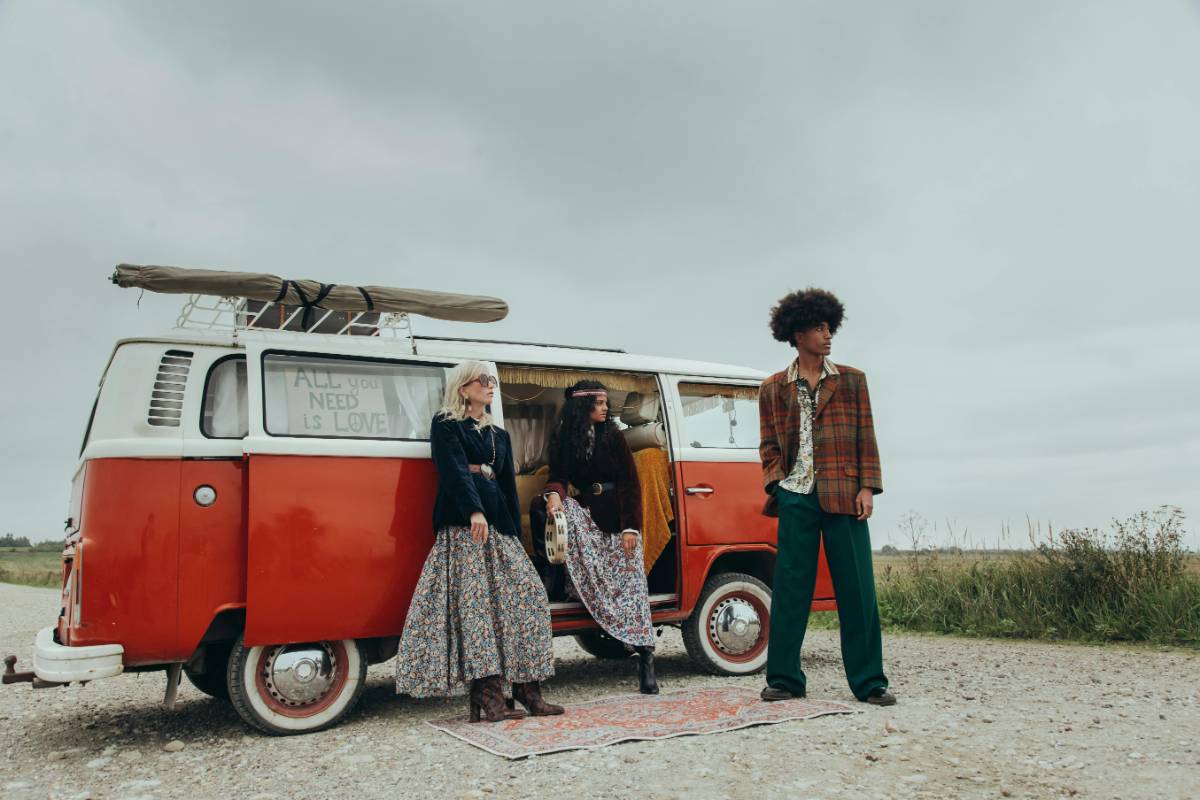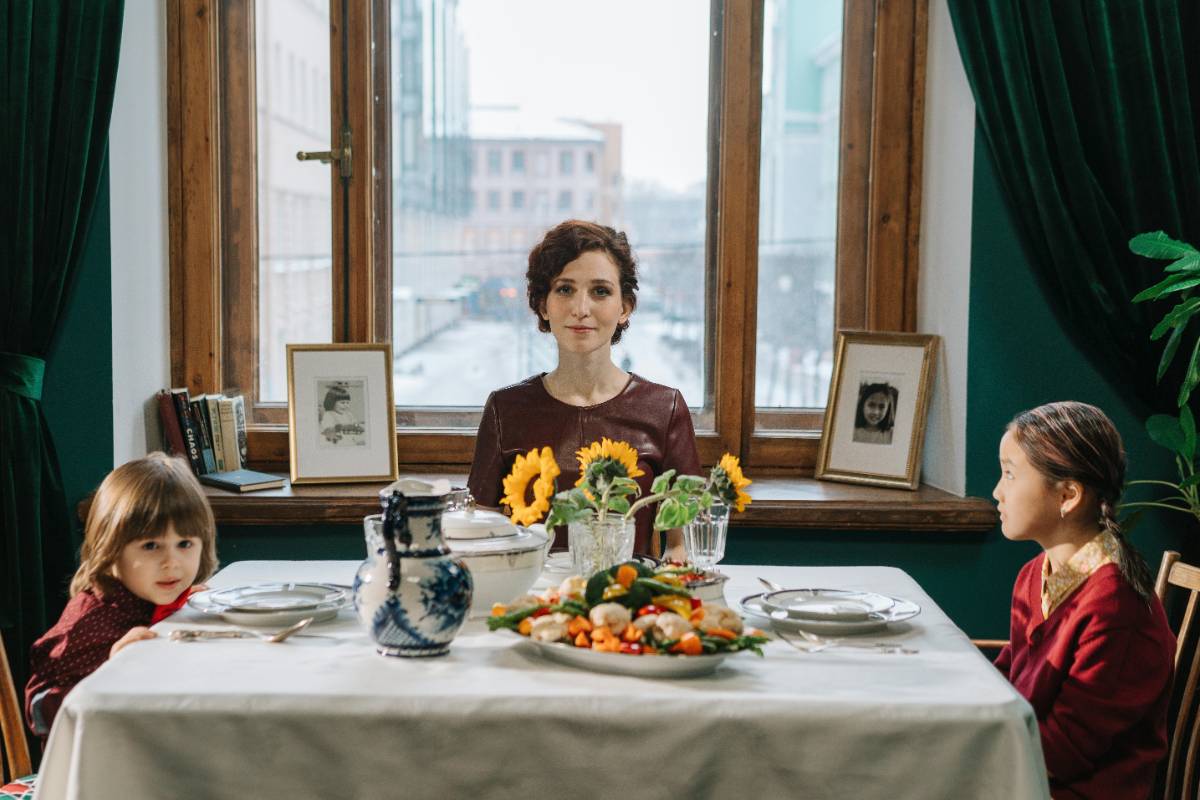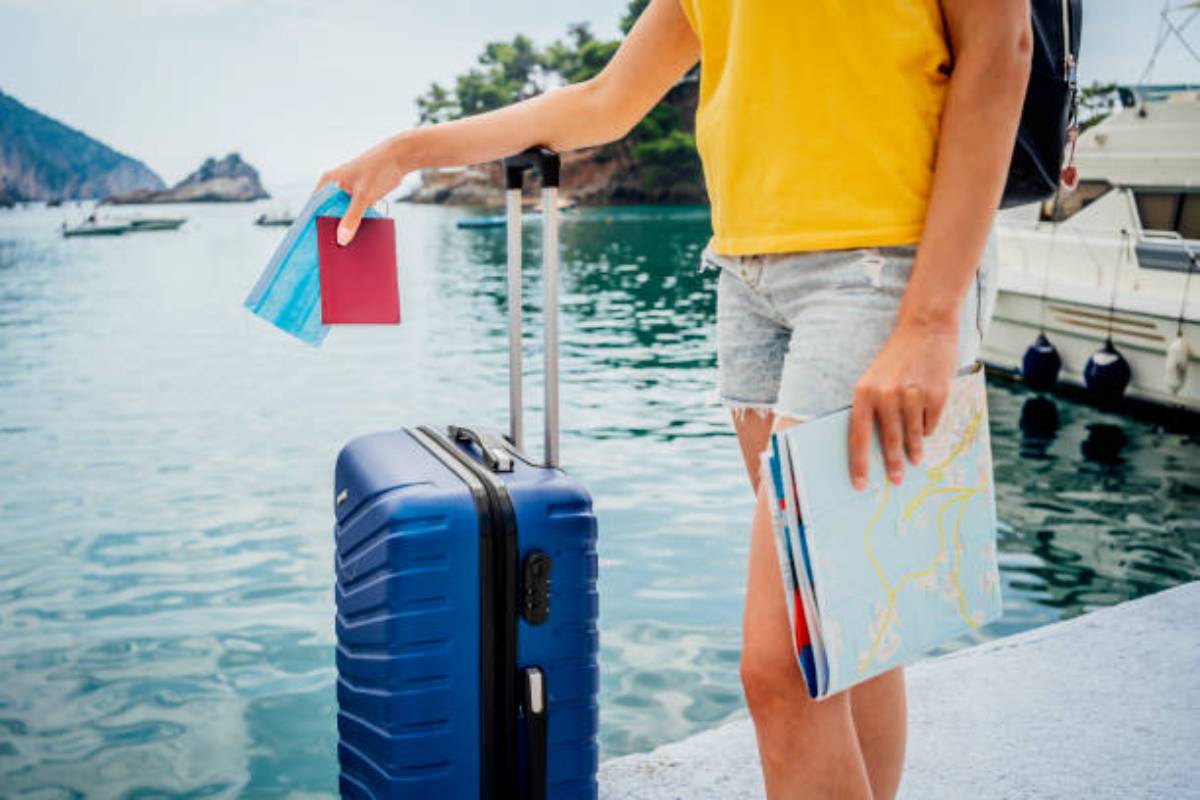
When traveling abroad, understanding and respecting local cultural norms is crucial for building positive relationships and avoiding misunderstandings. Every country has its own set of etiquette rules, from greeting customs to dining manners. Familiarizing yourself with these practices can enhance your travel experience and show respect for the culture you’re visiting.
 Step 1: Research Local Greetings
Step 1: Research Local GreetingsOne of the first things you'll encounter when arriving in a new country is the local greeting. Handshakes, hugs, bows, or even cheek kisses may be the norm, but the way greetings are performed varies widely across cultures.
In some countries, such as Japan, bowing is a traditional form of greeting, while in many Western cultures, a firm handshake is the standard. In the Middle East, greetings may include a kiss on both cheeks or a warm hug between close friends. Understanding these customs can help you avoid any awkwardness when meeting new people.
Step 2: Dress Appropriately for the CultureDress codes vary significantly from one country to another, and what's considered appropriate attire in your home country may not be suitable in another. Many cultures have more conservative dress codes, particularly in religious or rural areas.
For example, in some Middle Eastern and Asian countries, it’s important to dress modestly, especially when visiting religious sites. In contrast, beach destinations might encourage more casual or relaxed clothing. Always research the dress code for the country you're visiting and pack accordingly to ensure you're respectful of local customs.
Dining etiquette is one of the most important aspects of cultural etiquette. While a meal in one country may involve formal seating arrangements and specific utensils, in another, it might be a more relaxed, communal experience.
In some cultures, like in parts of Asia, it’s common to eat with chopsticks, and there are specific rules on how to use them, such as not sticking them upright in a bowl of rice. In the Middle East, sharing food from a communal plate is common, and in countries like Italy, it’s considered rude to order pasta with cream-based sauces after a certain time of day.
Religion plays a central role in many cultures, and understanding local religious practices is important for demonstrating respect. In some countries, it’s crucial to dress modestly when visiting places of worship or to remove your shoes before entering certain areas, like temples or mosques.
In predominantly Muslim countries, it’s important to be mindful of prayer times and fasting during Ramadan, when eating or drinking in public during daylight hours may be frowned upon. Always take the time to understand religious observances and be respectful during your travels.
 Step 5: Tipping Practices
Step 5: Tipping PracticesTipping customs vary from one country to another. In the United States, tipping is common and expected, but in many European countries, a service charge is often already included in the bill, making tipping optional. In some Asian countries, like Japan, tipping is not a common practice and may even be seen as disrespectful.
Before traveling, research the tipping customs in the country you’re visiting. This will help you avoid offending anyone or appearing disrespectful due to cultural differences. Understanding whether or not to tip, and how much, can enhance your experience and show appreciation for the services you receive.
Step 6: Be Mindful of Personal Space and Physical ContactDifferent cultures have different views on personal space and physical contact. In many Western countries, people value personal space and may not be comfortable with close physical contact from strangers. In contrast, cultures in the Mediterranean or Latin America may have a more relaxed view of personal space, and close physical proximity during conversations is more common.
It’s important to observe how locals interact with one another and adapt accordingly. While it’s always important to respect boundaries, understanding cultural norms can help you engage more comfortably in social situations.
Step 7: Learn Key Phrases in the Local LanguageAlthough English is widely spoken in many countries, learning a few key phrases in the local language can go a long way in making a positive impression. Simple phrases like "hello," "please," "thank you," and "excuse me" can help break the ice and show that you appreciate the local culture.
Learning a few words in the local language demonstrates respect and shows that you’ve made an effort to connect with the people and culture of the country you’re visiting. Locals often appreciate when travelers make the effort, even if it’s just a few basic phrases.
Step 8: Be Aware of Cultural Taboo SubjectsEvery culture has its taboos—subjects or actions that are considered offensive or inappropriate. These can vary widely, so it’s important to do your research before traveling. For example, discussing politics or religion may be a sensitive topic in certain cultures, and making jokes about the monarchy or national symbols can be considered highly disrespectful in others.
When traveling, be mindful of these taboos and avoid bringing up potentially offensive subjects unless you are familiar with the cultural context. This helps avoid misunderstandings and ensures that you maintain a respectful attitude throughout your travels.
Step 9: Observe Local Customs and TraditionsIn every country, there are customs and traditions that play an important role in the daily lives of locals. Whether it’s a specific holiday, ritual, or social expectation, take time to learn about these practices and participate when appropriate. Showing genuine interest in local traditions can enhance your experience and demonstrate respect for the culture.
Traveling abroad provides an opportunity to immerse yourself in a culture that may be very different from your own. By understanding and respecting local cultural norms, you not only enrich your travel experience but also foster goodwill and create meaningful connections with people you meet along the way.
The best of Business news, in your inbox.

Legal Strategist & Thought Leader
Robert Anthony Brown brings a strategic legal mindset with a passion for translating legal complexities into digestible insights. Their articles reflect a deep understanding of justice, rights, and reform.
Read more from Robert Anthony Brown
In today's fast-paced world, where most people rush through their travel experiences, slow travel offers a refreshing approach. Slow travel encourages you to take your time, immerse yourself in the local culture, and savor every moment of your journey. By focusing on quality over quantity, slow travel allows you to create meaningful, memorable experiences. Here’s how you can embrace the art of slow travel on your next trip.1323a.jpg***Choose a Single DestinationOne of the key principles of slow travel is focusing on one destination rather than trying to see multiple places in a short amount of time. Instead of hopping from one city to another, spend several days (or even weeks) in one location to really get to know the area.By choosing a single destination, you have the opportunity to explore it deeply. Visit local landmarks, try different eateries, interact with residents, and discover hidden gems off the beaten path. This approach allows you to experience a place in a more authentic and fulfilling way.***Travel Slowly Between LocationsIf you do want to visit multiple destinations, take your time getting between them. Instead of booking the fastest mode of transportation, consider taking a train, bus, or road trip. These slower modes of travel not only offer scenic views but also allow you to experience the journey itself, rather than just rushing to the next destination.Taking a slow journey allows you to see more of the countryside, interact with locals along the way, and enjoy the process of travel itself. Plan for longer travel days to make the most of these slower routes.***Embrace Local CultureSlow travel is about connecting with the local culture and immersing yourself in the community. Take time to learn about the history, customs, and traditions of the place you are visiting. Attend local festivals, try regional foods, or participate in cultural workshops.By embracing the culture, you gain a deeper understanding of the place and its people. It also helps you step away from the typical tourist experience and see the destination through a more authentic lens.1323b.jpg***Stay in Local AccommodationsInstead of staying in large chain hotels, consider booking accommodations that are locally owned, such as guesthouses, boutique hotels, or Airbnb rentals. These types of accommodations often provide a more intimate and personal experience, as the owners can offer insider tips and recommendations that you wouldn't find in a guidebook.Local accommodations also give you the opportunity to support small businesses and experience the destination like a local. You’ll often find these types of places in quieter neighborhoods, allowing you to experience the rhythm of daily life away from the tourist crowds.***Unplug and DisconnectOne of the core principles of slow travel is the idea of disconnecting from the hustle and bustle of modern life. When traveling slowly, take the time to unplug from your devices and immerse yourself fully in the experience.Turn off your phone notifications, avoid spending too much time on social media, and embrace the present moment. This allows you to be more mindful of your surroundings and the people you encounter along the way.***Pace YourselfOne of the challenges of modern travel is the temptation to over-schedule. On a slow travel journey, it’s important to resist the urge to fill every moment with activities. Instead, prioritize quality over quantity and allow yourself time to relax and take things at your own pace.Take breaks when you need them, and give yourself permission to just sit in a café, people-watch, or wander aimlessly through a neighborhood. Slow travel is about savoring the journey, not rushing through it.***Enjoy SpontaneityWhile planning is important, slow travel also allows room for spontaneity. Sometimes the best experiences come from unplanned moments—discovering a hidden alleyway, stumbling upon a local market, or meeting a friendly local who offers to show you around.Allow yourself to follow your instincts and embrace these spontaneous moments, as they often lead to the most memorable parts of your journey.***Reflect and Disconnect at the End of Each DayAt the end of each day, take some time to reflect on what you’ve experienced. Slow travel encourages mindfulness, and taking a few moments to digest the day’s adventures can help you process your journey more fully.Whether you keep a travel journal, meditate, or simply enjoy a quiet moment with a cup of tea, reflecting at the end of each day allows you to truly appreciate the experiences you’ve had and makes your travel more meaningful.***ConclusionThe art of slow travel is all about savoring the journey rather than rushing to check off items on a list. By slowing down, immersing yourself in the local culture, and allowing room for spontaneity, you can create richer and more memorable travel experiences. The next time you travel, remember to slow down and enjoy every moment.

Travel insurance is an essential consideration when planning any trip, as it provides financial protection in case of unexpected events, such as trip cancellations, medical emergencies, or lost luggage. With so many travel insurance options available, it can be challenging to determine which policy best suits your needs. Here’s a guide to help you choose the best travel insurance for your trip.1309a.jpg***Assess Your Coverage NeedsThe first step in choosing the right travel insurance is to assess your needs. Consider the following factors to determine the type and amount of coverage you need:Trip Length: The longer your trip, the more coverage you may need, especially for medical expenses and evacuation.Destination: Some countries have high medical costs or specific travel risks that require additional coverage, such as coverage for extreme sports or natural disasters.Health Conditions: If you have pre-existing health conditions, look for a policy that covers them or offers medical evacuation if necessary.Travel Activities: If you plan on participating in activities such as hiking, skiing, or scuba diving, check that your insurance covers these activities.Budget: While it's important to have comprehensive coverage, you also want to make sure the policy fits your travel budget. Compare options to find a balance between cost and coverage.1309b.jpg***Understand the Types of CoverageTravel insurance policies typically offer several types of coverage, and understanding these can help you make an informed decision:Trip Cancellation: This coverage reimburses you for non-refundable trip expenses if you need to cancel your trip for a covered reason (e.g., illness, injury, or death in the family).Medical and Emergency Coverage: This is crucial for international travelers, as medical care can be expensive abroad. Ensure the policy covers emergency medical treatment, hospitalization, and evacuation if needed.Baggage and Personal Belongings: This coverage reimburses you for lost, damaged, or stolen luggage and personal items during your trip.Travel Delay and Missed Connection: If you miss a flight connection or experience delays that result in additional expenses, this coverage can help reimburse you for meals, accommodations, and transportation.Emergency Evacuation: This coverage is especially important for travelers going to remote areas. It covers the cost of getting you to a medical facility in case of a serious injury or illness.***Check the Policy ExclusionsNo travel insurance policy covers everything, so it’s essential to read the exclusions carefully. Common exclusions include:Pre-existing medical conditions: Many policies do not cover medical expenses related to pre-existing conditions unless specifically stated.High-risk activities: Activities like skydiving, bungee jumping, or mountaineering might not be covered under a standard policy. You may need to purchase additional coverage for these activities.Natural disasters: Some policies may not cover cancellations or delays caused by natural disasters, so make sure you're aware of these potential exclusions.War or civil unrest: Some policies exclude coverage for events related to war, terrorism, or civil unrest.***Evaluate the Insurance ProviderChoosing a reputable and reliable insurance provider is just as important as choosing the right policy. Look for the following when evaluating insurance companies:Customer service: Check reviews and ratings of the provider's customer service, especially when it comes to claims handling. Look for companies with 24/7 assistance available for emergencies.Financial stability: A financially stable company is more likely to be able to pay out claims when needed. Check ratings from agencies like A.M. Best or Standard & Poor’s to evaluate the provider’s financial health.Claims process: Investigate the claims process to ensure it is straightforward and efficient. Some insurers offer mobile apps that allow you to submit claims quickly while on your trip.***Compare Policies and PricesOnce you’ve determined the type of coverage you need and identified potential providers, it’s time to compare policies and prices. Use comparison websites or consult with a travel insurance broker to see what’s available for your trip. Keep in mind that the cheapest option may not always provide the best coverage, so make sure to review each policy’s terms and conditions carefully.***ConclusionChoosing the best travel insurance for your trip involves assessing your needs, understanding the coverage options, checking exclusions, and selecting a reputable provider. With the right policy in place, you can enjoy peace of mind knowing you're protected against the unexpected.

Traveling by air can be one of the most expensive parts of a trip, but with a little bit of planning and strategy, you can significantly reduce the cost of your airfare. Whether you're planning a weekend getaway or an international adventure, there are several insider tips that can help you save money and score the best deals. Here are some expert tips to help budget travelers save on airfare.1303a.jpg***Book Early (But Not Too Early)One of the most common pieces of advice for saving on airfare is to book early. While booking in advance can often result in lower prices, there’s a sweet spot to aim for. For domestic flights, the best time to book is typically 1-3 months before departure. For international flights, try to book 2-6 months in advance. Booking too far in advance or waiting until the last minute can lead to higher prices.Try to avoid booking flights too early or too late, as both can be costly. Track flight prices over time to identify the best time to book.***Be Flexible with Your Travel DatesFlexibility is key when trying to save on airfare. Flights can vary dramatically in price depending on the day of the week, time of day, and time of year. Typically, mid-week flights (Tuesday, Wednesday, and Thursday) are less expensive than weekend flights, as fewer people travel on those days.Consider traveling during off-peak seasons. Avoid popular vacation times like summer, holidays, and school breaks. Flying in the shoulder season or off-season can result in significantly cheaper fares.***Use Fare Comparison Websites and AppsTo find the best airfare deals, use fare comparison websites and apps like Google Flights, Skyscanner, and Kayak. These platforms allow you to compare prices across different airlines and booking sites, helping you find the lowest price available for your chosen route.Set up fare alerts to be notified when prices drop for your desired flight. Many sites and apps offer this feature, allowing you to track fluctuations in ticket prices and book when the price is right.1303b.jpg***Consider Nearby AirportsWhen searching for flights, don’t limit yourself to just the main airport in your destination city. Many major cities have multiple airports, and flying into or out of a secondary airport can save you money. Be sure to factor in transportation costs to and from the airport when considering this option.For example, if you’re flying into New York City, check flights to airports like LaGuardia, JFK, or Newark. A flight into one airport may be cheaper, even after accounting for the cost of ground transportation to your accommodation.***Fly on Budget AirlinesBudget airlines like Southwest, Ryanair, and Spirit often offer significantly cheaper fares compared to traditional carriers. While these airlines may charge for extras like checked luggage, seat selection, and snacks, they can still be a cost-effective option for budget-conscious travelers.Keep an eye out for flash sales and promotions from budget airlines. Signing up for their email newsletters or following them on social media can help you stay informed about special deals and discounts.***Use Airline Miles and PointsIf you’re a frequent traveler, using airline miles or credit card points can be a great way to save on airfare. Many credit cards offer travel rewards that can be redeemed for flights, hotel stays, and more.Sign up for frequent flyer programs with airlines to accumulate miles that can be redeemed for future flights. Even if you don’t fly often, you can still take advantage of credit card reward programs to earn points toward flights.***Book Connecting Flights Instead of NonstopNonstop flights are often more convenient, but they can also be more expensive. If you're willing to add a little extra time to your trip, consider booking a connecting flight instead of a direct route. Connecting flights can be cheaper, especially if you have flexibility with your travel time and destinations.Check different layover options to find the best deals, but be mindful of long layovers that could add unnecessary time to your journey.***Check for Deals on Social MediaMany airlines and travel companies post exclusive deals and discounts on their social media channels. Follow airlines, travel agencies, and deal sites like Secret Flying or The Flight Deal to catch flash sales and promotions that might not be advertised on fare comparison websites.Social media platforms are also a great way to stay updated on last-minute sales and special offers from airlines.***Be Aware of Hidden FeesWhile a flight might look like a great deal at first glance, make sure to factor in all potential fees. Budget airlines and even some major carriers often charge additional fees for baggage, seat selection, and other services. Be sure to read the fine print before booking to avoid unexpected costs.Consider whether you need checked luggage or if you can make do with just a carry-on. If you're traveling light, you can save money by avoiding checked baggage fees.***ConclusionSaving on airfare doesn’t have to be difficult. By using these insider tips—booking at the right time, being flexible with your travel dates, comparing prices across multiple platforms, and using rewards points—you can save significant amounts on your flight tickets. With a little planning, you can fly to your next destination without breaking the bank!

For wine lovers, there's nothing better than combining travel with the discovery of exquisite vineyards. From the rolling hills of Tuscany to the sun-drenched valleys of California, the world’s best wine regions offer an unforgettable experience. Here are some of the top vineyard destinations to visit around the world.1321a.jpg***Bordeaux, France: The Heart of French Wine CountryBordeaux is synonymous with fine wine, offering a landscape dotted with vineyards and charming châteaux. Known for its red wine blends, Bordeaux has been producing wine for centuries. The region is home to some of the most famous wine estates in the world, such as Château Margaux and Château Lafite Rothschild.Bordeaux’s wine tours offer the chance to taste world-renowned wines, while also experiencing the picturesque French countryside, medieval towns, and fine dining.***Napa Valley, USA: America's Premier Wine RegionLocated in California, Napa Valley is one of the most popular wine regions in the United States. Known for its rich reds, particularly Cabernet Sauvignon, Napa is a place where wine lovers can enjoy both high-end wineries and casual tasting rooms. The scenic vineyards set against the backdrop of the Mayacamas Mountains make Napa a stunning place to visit.Napa Valley offers year-round wine festivals, and visitors can take part in guided wine tours, cooking classes, and even vineyard bike rides. The region’s Mediterranean climate makes it ideal for wine production.***Tuscany, Italy: A Blend of History and WineTuscany is a dream destination for wine enthusiasts. The rolling hills, historic villages, and famous vineyards create a picturesque backdrop for a wine-focused vacation. Tuscany’s Chianti region is famous for its Sangiovese wines, but the region also produces a variety of reds and whites.You can visit vineyards that have been around for centuries, enjoy wine tastings with local food pairings, and explore the beautiful Tuscan countryside. Don’t miss a visit to the iconic medieval town of San Gimignano and its wine cellars.1321b.jpg***Mendoza, Argentina: Wine in the AndesMendoza is Argentina’s most famous wine region, nestled at the foothills of the Andes. Known for its Malbec wines, Mendoza is a region that offers wine lovers an opportunity to explore high-altitude vineyards and enjoy spectacular views of the mountains. The region’s dry climate and abundant sunshine make it perfect for growing rich, full-bodied wines.In addition to wine tasting, Mendoza offers activities such as horse riding through the vineyards and exploring local wine museums. The combination of stunning natural beauty and world-class wine makes it a must-visit destination.***Rioja, Spain: Spain’s Premier Wine RegionRioja, located in northern Spain, is one of the country’s most famous wine regions. Known for its Tempranillo wines, Rioja offers visitors a chance to explore traditional wineries that have been making wine for generations. The region’s beautiful landscape, with vineyards stretching across the rolling hills and valleys, is perfect for a wine-themed getaway.In Rioja, you can visit historic wine cellars, sample a variety of wines, and learn about the unique aging process of Rioja wines. The region also offers fantastic cuisine, making it a perfect destination for food and wine lovers.***Cape Winelands, South Africa: A Hidden GemThe Cape Winelands of South Africa are quickly gaining recognition as one of the world’s top wine destinations. Just a short drive from Cape Town, the region is home to scenic vineyards, rolling hills, and charming towns such as Stellenbosch and Franschhoek. The area is known for its excellent Sauvignon Blanc, Chardonnay, and Pinotage wines.Cape Winelands offers a range of activities, from wine tastings to horseback riding through the vineyards, as well as gourmet restaurants that showcase the best of South African cuisine paired with local wines.***La Rioja, Chile: An Unforgettable Wine ExperienceLa Rioja in Chile is often compared to Bordeaux due to its exceptional wines and picturesque vineyards. Located at the base of the Andes mountains, this region is known for its smooth reds, particularly Carmenère and Cabernet Sauvignon. La Rioja offers breathtaking landscapes with its vineyards, mountains, and charming small towns.Visitors can enjoy private wine tours, explore the region’s artisanal wines, and relax at luxurious vineyard hotels with sweeping views of the Andes. La Rioja is perfect for those looking for an off-the-beaten-path wine experience.***Marlborough, New Zealand: A Cool-Climate Wine RegionMarlborough is New Zealand’s most famous wine region, known for its fresh and vibrant Sauvignon Blanc. Located on the South Island, Marlborough is characterized by its cool climate and long sunlight hours, creating the ideal conditions for aromatic white wines and Pinot Noir.Marlborough offers visitors a chance to take scenic bike tours through the vineyards, enjoy tastings at boutique wineries, and explore the nearby coastline. The region’s natural beauty, combined with its world-class wines, makes it an unforgettable destination.***Okanagan Valley, Canada: A Rising StarOkanagan Valley in British Columbia is an up-and-coming wine region known for its diverse wine production. With a growing number of wineries, the valley produces everything from ice wine to Chardonnay and Merlot. The area’s stunning scenery, with lakes, mountains, and vineyards, makes it a picturesque wine destination.Okanagan Valley is perfect for those looking for a more laid-back wine experience, with activities such as vineyard picnics, wine tasting tours, and boating on Okanagan Lake.***ConclusionWine and travel go hand in hand, offering a chance to explore the world’s most beautiful regions while indulging in some of the finest wines. Whether you're touring the iconic vineyards of Bordeaux, sipping Malbec in Mendoza, or discovering the hidden gems of South Africa, a wine-themed vacation promises to be both educational and unforgettable. Plan your next wine adventure to one of these top vineyard destinations and savor the experience.